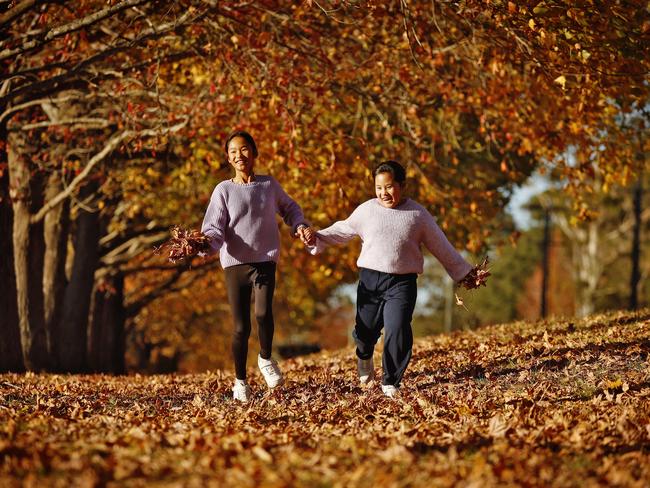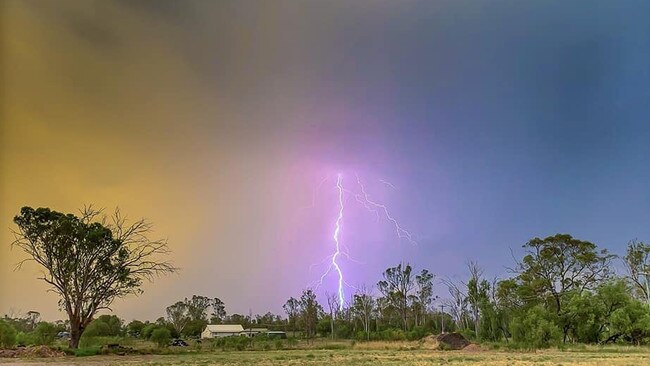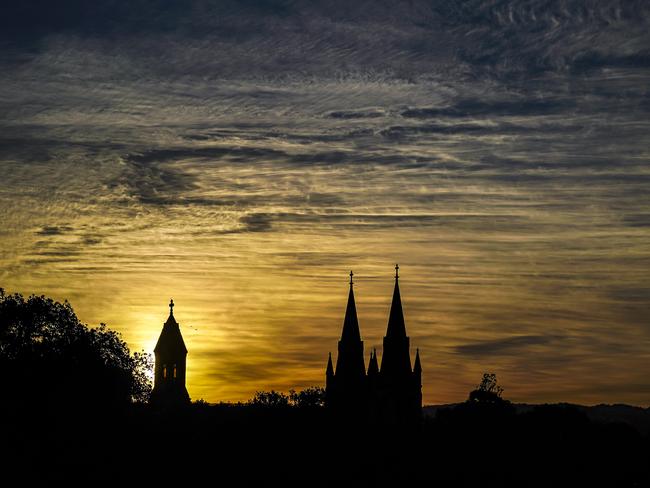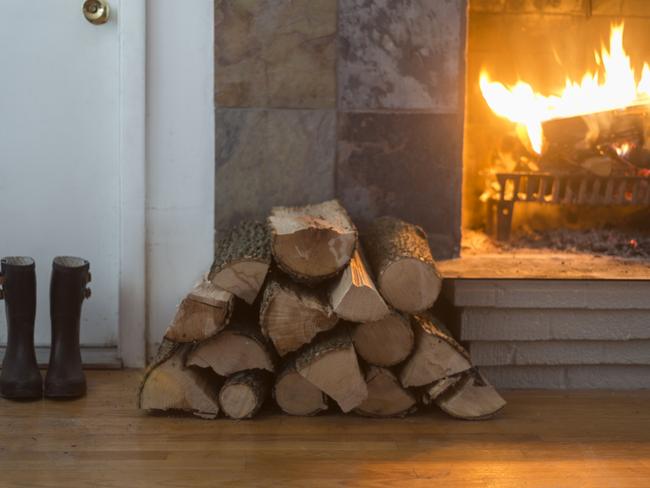Everything you need to know about our winter weather — and what’s going to happen next
Winter is going to be a delight across much of Australia – but a grim new record is expected later in the year. Read why and check our expert tips for making the most of the season.
National
Don't miss out on the headlines from National. Followed categories will be added to My News.
After three years of mouldy misery across much of Australia, take heart – this winter is set to be mainly dry and bright.
The downpours that caused a run on dehumidifiers and anti-fungus remedies for NSW residents in particular, plus devastating floods in places, this time 12 months ago are largely history, as Australia’s weather patterns shift dramatically from wetter to drier conditions.
But according to the meteorology experts at Sky News, that change is likely to have major implications by spring ahead of a potentially record-breaking, and dangerous, summer which will bring the risk of drought, fire and heatwave-related health issues.

“Somewhere in Australia is likely to break the country’s all-time record of 50.7 degrees,” said Sky meteorologist Rob Sharpe. “In fact, I wouldn’t be surprised if it’s beaten by a few places and we see our first 52 degree day. From a climate perspective it’s almost the perfect set-up.”
Generally this winter and into spring, expect lots of sun and higher temperatures – and don’t let the chilly mornings fool you, said Sharpe’s colleague Alison Osborne, a former Royal Australian Navy meteorologist and oceanographer, who says we will likely find ourselves in a rain-suppressing El Nino climate event later this year.
“Recent frosty and usually cold mornings up and down Australia are a tell-tale sign of the drying trend that is spreading across the nation – far from being a sign of a cold winter, it’s symptomatic of a lack of cloud, and thus warmer-than-normal daytime temperatures,” she said.
“The impacts of El Nino – the drier, warmer weather – will be felt long before the event is likely declared.”

The expected El Nino is the opposite of the three consecutive La Nina events over the Pacific Ocean that brought so much rain since 2020.
And El Nino is unlikely to act alone, the Sky team warn. To Australia’s west, the Indian Ocean is changing tack and is expected to move into its positive phase – a drier period for Australia, and a key driver of the 2019 Black Summer bushfires.
Essentially, the moisture we’ve been supplied on tap from these two oceans is quite likely to evaporate for the foreseeable future, with huge implications for Australian society.

Paddocks in the east are drying up, although there are still plenty of reserves in most of the dams.
And while the risk of flooding is substantially reduced, many understand that after the floods come fires, with much of eastern and central Australia covered in already-yellowing grass and shrubs.
Increased thunderstorms are expected from August, with plentiful lightning and minimal rainfall – the right ingredients to start fires.
A small piece of good news for eastern Australia is that the forested regions won’t be as dry as in 2019. It takes longer for forests to dry out. But fires remain a serious concern through spring and into summer.

Sky News is bracing for the coming months by deepening its weather coverage and appointing a third meteorologist, making the station’s team – which also includes two dedicated reporters – the biggest on Australia TV.
New hourly bulletins, graphics and overseas reports are being rolled out as the station aims not just to forecast, but to explain and report on the impact of, key weather events.
“Weather forecasting is still the main task at Sky News Weather. Viewers want to know what the temperature and weather conditions will be in the days and weeks ahead,” said Chris Willis, Head of News. “But, viewers have told us they also want to know the ‘why’ of major weather events and our new style of graphic presentation will enable us to do that better.”
CHILLED-OUT BRADLYN’S BREATH OF FRESH AIR

Trading Arctic blizzards for Aussie droughts and flooding rains, meteorologist Bradlyn Oakes brings a breath of fresh air to weather reporting Down Under.
Before moving to Sydney with her Australian-born husband in March, Oakes spent four years covering the weather from Regina, in Canada’s Saskatchewan province.
“Canadian weather and Australian weather are very different in a lot of ways and so I am slowly getting my head around a whole different continent on a whole different side of the world,” she laughs.
“Systems that spin a different way, so our fronts move in the opposite direction. The lows and highs and the winds around them move in the opposite direction. There’s a lot less snow. A lot less cold and a lot more heat.”
Passionate about the great outdoors and with a flair for maths, the 1996 natural disaster movie Twister made 30-year-old Oakes realise meteorology was a field that could combine her interests.

“Like a lot of North American meteorologists, I watched Twister and was like: I love the weather, I want to do that,” she says. “So, I went and did my undergraduate degree in earth sciences.”
Although the bulk of her job involves reporting on weather patterns in front of a studio green screen, Oakes says she relishes getting out in the elements to report on weather patterns as they are unfolding.
“Maybe it’s the thrill seeker in me but I am totally fascinated by the weather and the planet, and I feel so lucky to be able to make a career out of it,” she says.
“I would love to get out and cover weather events in Australia. That was a big part of my job before coming here. Doing things like reporting from the side of highways on days when it felt like -55 or getting out in a blizzard.”

Although her expertise leaves her primed to elevate small talk about the weather to a far more substantial conversation, Oakes says she tries not to talk people’s ears off.
“But I also think weather is something that brings every person on the planet together,” she says.
“If it’s a cold miserable day outside, then that’s what everybody is talking about.
“If we’re watching for bushfires, then that’s what everybody is talking about. It’s a very shared experience. No matter who you are, what your background is, we can all look up at the sky and experience the same thing on the same day.”
HOT TIPS FOR THE COOLER MONTHS

Want to make the most of the next month or two? From finance to food, News Corp’s experts have some pointers to make this winter a little brighter.
Money
* Check your bills – many prices rise from July 1, so it’s a good time to review what you pay for everything and switch providers if savings are possible.
* Reduce energy use, especially with electricity prices rising in July this year by up to 25 per cent. There is plenty of free advice online.
* The biggest household energy expense is usually airconditioning, so in winter run your thermostat between 18 and 22 degrees – every degree higher can add 10 per cent to running costs.
* Chase a bigger tax refund by using June to prepay work-related and other deductible expenses, make super contributions and tweak investments, before the financial year ends.
Health
* Get both your Covid and flu jab.
* Consider wearing a mask when out shopping and regularly wash your hands and use hand sanitiser as these are the months viruses like Covid, flu and RSV, which can kill babies, spread.
* Reconsider socialising if you have a virus. This is particularly important if a social event involves new babies or elderly people who could die from complications of some upper respiratory viruses.

Home
* Make the home feel more cosy with candles, “warm” light bulbs, blankets and throws on furniture; and insulate against draughts from windows and under doors – use tape, bubble wrap and door snakes to save money.
* If you have a garden, feed the flowerbeds and lawns with compost or organic fertiliser. Also weed, mulch and consider planting winter-appropriate plants, according to your state.
* If you’re looking to sell, declutter and brighten your property and keep it spick and span, inside and out; and be cautious about hanging out for a higher price – the early offers are often the best. If you’re buying, as at any time of year, do your research.
Food
* Put the slow cooker to good use. It can turn cheaper cuts of meat, like gravy beef, topside and chuck, into melt-in-the-mouth casseroles. And it is cheaper to run than the oven.
* Spices, such as cinnamon, nutmeg and clove, add a wonderful warmth to dishes, whether it be a slow-cooked curry, apple crumble or self-saucing pudding.
* It’s soup time! While it’s hard to keep the waistline intact during the cooler months, not all winter cooking has to be laden with kilojoules. Tomato-based soups and clear broths are often healthier than their cream-based counterparts, and they are often freezer-friendly, too, which means you can do some batch-cooking and get ahead.
More Coverage
Originally published as Everything you need to know about our winter weather — and what’s going to happen next




